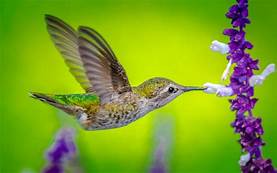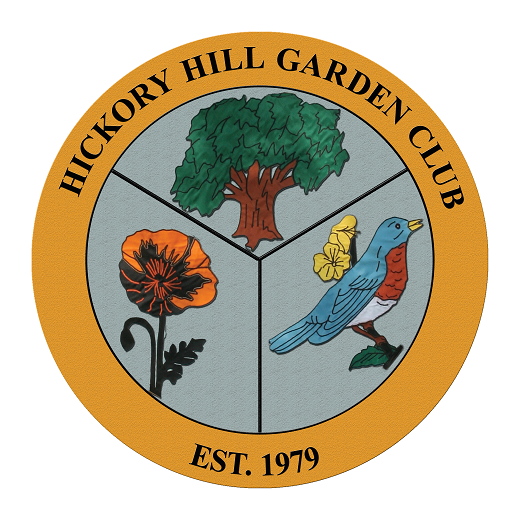Why Protect Pollinators?
Pollination is essential. Globally, over 85 percent of all flowering plant species rely on or benefit from animals, primarily insects, for pollination. These many organisms move pollen from one blossom to another, enabling the plants to produce fruit, seeds, and the next generation of flowering plants. Without pollinators, it would be impossible to maintain productive, diverse natural plant communities and ensure the functionality of our agricultural lands. Alarmingly, many recent studies indicate that insect pollinator populations are declining in many regions, including the United States and Europe. Some of the hardest-hit groups include bees, moths, and butterflies, important pollinators for many wild and cultivated plants, including various specialty crops. As habitat loss and degradation is a primary driver of these declines, rebuilding wildlife-friendly landscapes is more important than ever.
That’s where you come in. Gardening for wildlife is a fun and rewarding endeavor. Now, more than ever, the choices we make in our own landscapes matter. While such spaces can never replace pristine natural environments, they can provide pollinators and birds with important food, nesting, and shelter resources and help reduce the many impacts of habitat fragmentation and urbanization. A growing body of research supports the wildlife conservation benefits of these non-traditional lands. Private yards and home gardens collectively comprise the largest percentage pf green space in most urban areas. Additionally, as the majority of Americans now live in cities and their surrounding suburbs, yards and gardens offer tremendous potential for each of us to make a difference.
Meet the Pollinators
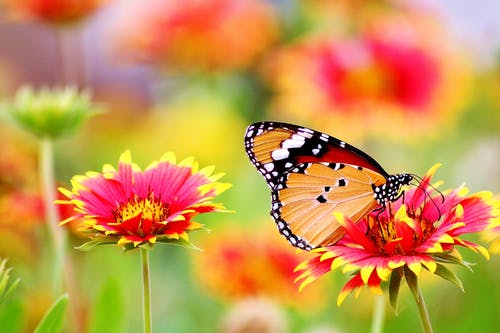
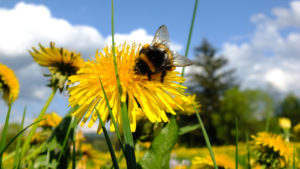
While bees, especially the western honey bee (Apis mellifera, also known as the European honey bee), get most of the attention, when it comes to pollination, many other insects regularly visit flowers and serve as pollinators. The most common groups include butterflies, moths, beetles, flies, and wasps.
Bees
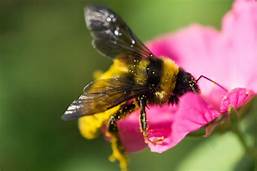
North America boats some 4,000 different bee species, with several hundreds species occurring in the Southeast. Florida has around 316 species, with North Carolina boasting over 500 species. With the exception of the nonnative western honey bee and a few other introduced species, the rest are native, and the majority of bees actually lead solitary lifestyles. They also display a wide range of sizes, colors, and behaviors, making them fascinating and attractive garden visitors. Collectively, bees are arguably the most effective and efficient insect pollinators. Beyond visiting flowers for nectar, they also actively collect pollen. These raw materials represent the primary food resources for adult bees and their developing young. In other words, they are highly motivated to make many flower visits and transport pollen, the components necessary for successful pollination. In addition, bees actively forge for floral resources in and around the landscape in which they nest. The majority of the bees are generalists; like hungry patrons visiting a buffet, they visit a broad array of different flowers, preferring plants with large amounts of high-quality resources when available.

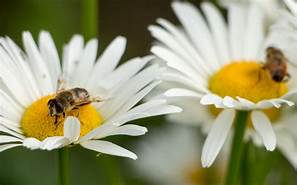
Butterflies
Butterflies are among the most recognizable and charismatic insects. Their tremendous appeal makes them ideal “gateway bugs” to help people connect with the natural world. Not surprisingly, butterfly gardening and butterfly watching are soaring in popularity nationwide. While the greatest diversity of butterflies occurs in tropical regions of the world, North America is home to around 800 different species, with more than 250 species found in the Southeast.


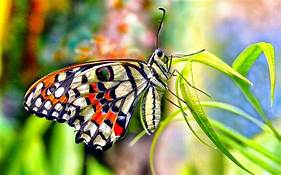
All adult butterflies feed on liquids. Most species in our area consume sugar-rich nectar: this potent energy source helps power their flight and virtually all other activities. This is why butterflies are highly attracted to colorful blooming flowers. With the exception of the zebra longwing butterfly, which actively collects and feeds on pollen, all other species visit flowers to sip nectar. In the process of feeding, they often brush against the flower’s anthers and inadvertently pick up pollen on their head, body, or wings, making them important pollinators.
Moths

Compared to butterflies, moths are much more diverse. There are just around 250 butterfly species in the Southeast, but there are more than 3,500 species of moths, roughly 14 times as many, Despite this diversity, moths tend to be poorly studied and are often overlooked. As a result, relatively little is known about how much this primarily nocturnal group contributes to plant pollination.
Nonetheless, recent research suggests that moths play a particularly important role as pollinators, including as pollinators of specialty agricultural crops, augmenting the work of bees and other flower-visiting insects. Moths may also help improve the genetic diversity of plants because they transport pollen over greater distances than bees. It is almost a certainty that additional studies will reveal that moths play a critical role as pollinators.
Beetles
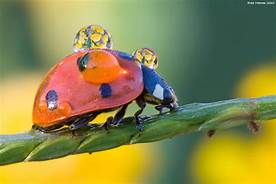
Beetles represent the largest and most diverse order of insects. In North America alone, there are approximately 28,000 species, and that’s just a mere seven percent of the global total. Due to their tremendous numbers alone, beetles represent the largest group of pollinating animals, but not all beetles visit flowers. Those that do, visit in search of food, typically feeding on pollen, but they may also munch away on various flower parts and, less often, nectar. As beetles are typically somewhat clumsy, bulky insects, they need tp\o physically land on and crawl across blossoms to feed, and in the process they frequently pick up pollen grains. They are most often encountered on larger open flowers or flowers with sizable clusters, This wonderful group of insects boasts a truly dizzying array of individual sizes, colors, and shapes, making observation fun and highly rewarding.
Flies
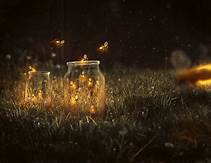
With approximately 17,000 species found in North America, flies are another large and highly diverse group of insects, and a great many of them – even mosquitoes – frequent flowers. They typically feed on sugar-rich nectar, and occasionally pollen. Even though they have something of a negative reputation, flies are prolific and important pollinators, visiting a wide range of flowering plants, including many important crops, such as cherries, apples, pears, strawberries, and raspberries, among others. In addition, the larvae of many species play other key roles in the environment, including as predators that provide natural pest control or as decomposers, helping to break down dead plant or animal materials. Some fly groups, such as lover flies (or flower flies), have a particularly strong predilection for flowers, and many species are highly convincing bee or wasp mimics.
Wasps
Together with bees and ants, wasps belong to the order Hymenoptera, the third-largest group of insects. Despite often being feared, the vast majority of wasps are actually solitary, nonaggressive, and don’t pose a stinging hazard. By contrast, social wasps, such as yellow jackets, paper wasps, and hornets, can deliver a painful sting and will actively defend their nest if disturbed or threatened. Collectively, wasps are highly beneficial insects. Many are important pollinators that frequent a wide range of flowering plants. The adults are equally valuable predators or parasites of a wide range of insects, including many pest species. Taken as a whole, wasps are far more beneficial to the ecosystem – and to us – than we give them credit for.
Bee Mimics and Lookalikes
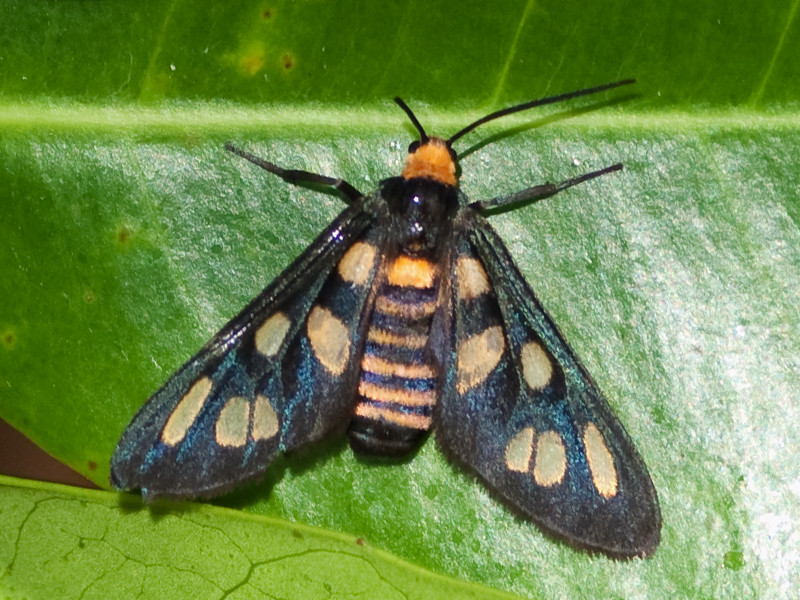
Looks can be deceiving: a range of flower-visiting insects mimic bees or wasps, displaying superficially similar yellow-and-black color patterns to scare off would-be predators. While a great many of these lookalikes are flies, some day-flying moths and even a scarab beetle or two get in on the act. Thus, it is important not to jump to quick conclusions when you spot a brightly colored insect. It takes careful observation to recognize these superb disguises.
Birds
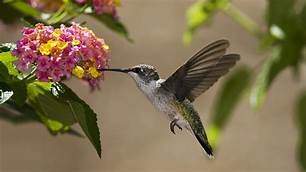
Birds are popular and welcome garden visitors. Beyond their broad appeal, birds provide a range of valuable services to the landscape. Ruby-throated hummingbirds are colorful and entertaining flower visitors that help pollinate numerous plant species. A great many birds, such as bluebirds, wrens, woodpeckers, swallows, and crows, also feed on insects. This is especially true during breeding season, when insects make up the majority of the high-protein diet adult birds feed to their young. In the process, they provide natural pest control and help keep plant-feeding insects populations in check. Still others help manage weeds by consuming large quantities of seed from aggressive or otherwise undesirable plants.
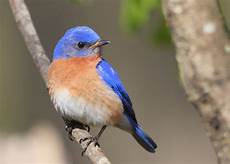

Fruit-feeding birds play a key role in seed dispersal. In fact, hundreds of plant species rely on our feathered friends for this valuable service. In doing so, birds help maintain healthy and diverse native plant populations.
